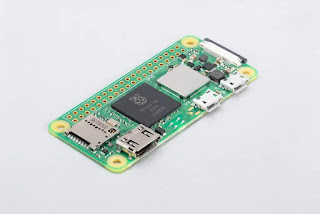The Raspberry Pi Zero 2 W, a marvel of compact computing, is more than just a tiny board. It's a gateway to the exciting world of web development and hosting, offering an affordable and versatile platform for learning and deploying web applications. Let's dive into how you can harness its potential and turn it into a web server, ready to host your own website or web application.
Download and Flash Raspberry Pi OS: We'll begin by downloading the Raspberry Pi OS (available in two flavors: Lite and Desktop). The Lite version is lean and efficient, perfect for resource-constrained environments. The Desktop version offers a more familiar graphical interface.The Flashing Ritual: We'll use a tool like Raspberry Pi Imager to flash this downloaded operating system onto a microSD card. Think of this as transferring the OS blueprint onto the card, ready to be read and executed by the Pi.The Boot Up: Finally, we'll insert the microSD card into the Raspberry Pi and power it up. The magic begins as the Pi reads the operating system from the card and boots up, bringing it to life.
Connect and Configure: We'll connect our Pi to a monitor, keyboard, and mouse. Alternatively, we can use SSH for remote access, allowing us to connect and control the Pi from a different computer.The Raspberry Pi Configuration Tool: This handy tool lets us configure various aspects of our Pi, such as setting the locale (language and time zone), enabling SSH for remote access, and managing other system settings.
sudo apt update: This command ensures we have the latest software package lists. Think of it as checking for the most recent blueprints for our software.sudo apt upgrade: This command updates the installed packages to their latest versions. Imagine this as ensuring we're using the newest and most robust tools for building our web server.
Apache: This is a veteran server, known for its flexibility and ease of use. It's a great choice for beginners and those looking for a well-established and reliable server.Nginx: This server is known for its high performance and efficiency, making it ideal for handling high traffic loads. It's a popular choice for demanding websites and applications.Installation: Apache: sudo apt install apache2Nginx: sudo apt install nginx
sudo apt install php libapache2-mod-php
sudo apt install mysql-server php-mysql
Apache: We'll move our website files to the /var/www/html/ directory. This is the location where Apache looks for website files.Nginx: The default directory for Nginx is /usr/share/nginx/html/.Example: To copy your website files to the Apache directory, use the following command:sudo cp -r /path/to/your/site/* /var/www/html/
sudo chown -R www-data:www-data /var/www/html/ sudo chmod -R 755 /var/www/html/
Find your Raspberry Pi’s IP address: Use the command hostname -I to find your Pi's IP address. This is the unique address that identifies your Pi on the network.Open a web browser: Enter http://<your_pi_ip> in your browser's address bar. If all went well, you should now see your website!
nano, vim, or code (VSCode): Choose your preferred text editor. Nano is a simple command-line editor, while vim is a powerful but more complex editor. VSCode, a popular code editor, can be installed using the code-server.Example: To edit the index.html file in the Apache directory: sudo nano /var/www/html/index.html
Node.js: This is a powerful platform for server-side JavaScript. It allows you to create dynamic content and web applications using JavaScript.Git: This version control system helps manage and track changes to your website code.
sudo apt update && sudo apt upgrade: Regular updates ensure you have the latest security patches and bug fixes, preventing potential vulnerabilities.
ufw: This user-friendly firewall helps protect your Pi by controlling network traffic.sudo apt install ufw **sudo ufw allow 'Apache Full' # or 'Nginx Full' ** sudo ufw enable
Change Default Passwords: Always change the default passwords for your Pi and any other services you've installed.SSH Keys: Using SSH keys for secure remote access is a more secure method than using passwords.
Let’s Encrypt: This service provides free SSL certificates, essential for enabling HTTPS, the secure version of HTTP. HTTPS encrypts the communication between your website and users, protecting sensitive information.sudo apt install certbot python3-certbot-apache # For Apache sudo apt install certbot python3-certbot-nginx # For Nginx
Dynamic DNS: If your IP address changes frequently, a dynamic DNS service will ensure your website's address remains consistent, even if your IP address changes.




0 comments:
Post a Comment